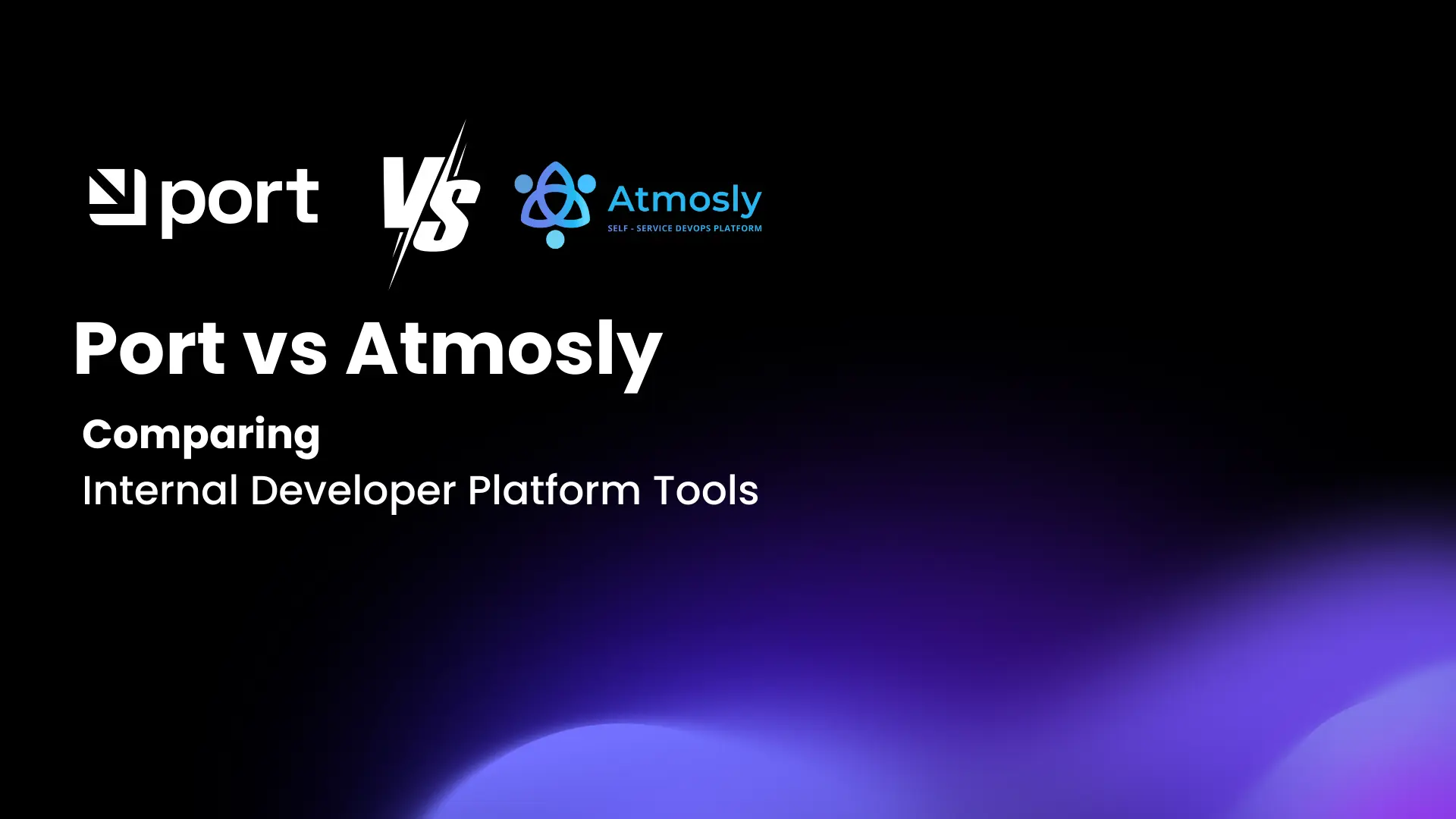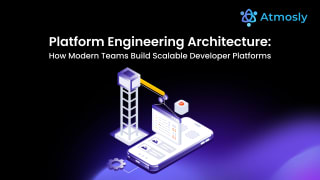As Internal Developer Platforms (IDPs) continue to shape the future of software delivery, companies are turning to tools like Port and Atmosly to streamline developer workflows, accelerate deployments, and increase infrastructure control.
While both platforms serve the broader IDP space, they take distinctly different approaches. This article offers a side-by-side analysis of Port and Atmosly, helping platform teams, DevOps engineers, and CTOs choose the right solution for their unique needs.
What Is an Internal Developer Platform (IDP)?
An Internal Developer Platform is a framework that abstracts infrastructure complexity and allows software developers to self-serve environments, deployments, and infrastructure tasks without waiting on DevOps or platform teams. The goal is to improve deployment velocity, reduce cognitive load, and enforce guardrails through automation.
Both Port and Atmosly aim to enable IDPs, but they vary greatly in implementation, developer experience, and extensibility.
Overview: Port vs Atmosly at a Glance
| Feature | Port | Atmosly |
|---|---|---|
| Developer Portal | Yes (Visual-first) | Yes (GitOps & API-driven) |
| GitOps Support | Partial (via integrations) | Native GitOps built-in |
| CI/CD Integration | Orchestration via plugins | Built-in CI/CD engine |
| Environment Provisioning | Manual or scripted | Automated (ephemeral & persistent) |
| Secrets Management | External integrations | Built-in with RBAC |
| Platform Templates | Blueprints | Golden path templates |
| Drift Detection | Not available | GitOps-based rollback included |
| Ideal Users | DevOps ops teams, low-code builders | Platform engineering, product teams |
Port: A Visual Approach to Developer Portals
Port enables teams to build custom developer portals using a visual-first blueprint model. It is ideal for companies that want a unified view of services, environments, and deployments without writing too much infrastructure code.
Key Features:
- Software blueprints to model components
- Integration with tools like GitHub, ArgoCD, and Kubernetes
- UI for managing microservices metadata and actions
- Workflow automation using external scripts and connectors
Strengths:
- Great for visualizing and managing service ownership
- Flexible UI for product and platform teams
- Plug-and-play portal experience
Limitations:
- Lacks deep automation for CI/CD pipelines
- Relies heavily on third-party integrations
- No native support for dynamic environments or GitOps rollback
Atmosly: GitOps-First DevOps Automation Platform
Atmosly is a modern DevOps platform designed for building Internal Developer Platforms with an emphasis on GitOps, self-service, and platform engineering best practices. It abstracts the backend infra complexity and enables developers to deploy, manage, and rollback services without direct infra access.
Key Features:
- Native GitOps workflows with version-controlled deployments
- Ephemeral and persistent environment provisioning
- CI/CD engine supporting GitHub Actions, GitLab CI, Bitbucket Pipelines
- Built-in secrets management with access control policies
- Reusable golden path templates for infra, environments, and pipelines
Strengths:
- Fully integrated platform for infra + CI/CD + secrets + environments
- Fast onboarding for both platform teams and developers
- Powerful automation with minimal configuration overhead
Limitations:
- Requires GitOps familiarity for advanced use
- Less UI-focused than Port (CLI/API-first approach)
Key Comparison: Port vs Atmosly
Developer Onboarding & UX
- Port provides a visual, low-code dashboard ideal for non-technical users and operations teams.
- Atmosly is CLI and Git-first, aligning with developers and platform engineers who prefer configuration-as-code.
Verdict: Port is UI-centric; Atmosly is code-centric.
GitOps Implementation
- Port supports GitOps workflows indirectly via ArgoCD integrations.
- Atmosly is GitOps-native deployments, rollbacks, and drift detection are all declarative and automatic.
Verdict: Atmosly is better for GitOps-first teams.
CI/CD Support
- Port requires external CI/CD tools and custom scripting.
- Atmosly includes a built-in CI/CD automation engine with environment-aware workflows.
Verdict: Atmosly provides stronger out-of-the-box automation.
Environment Management
- Port requires manual setup or orchestration through external tools.
- Atmosly provisions environments automatically (ephemeral or persistent), ideal for preview branches, QA, and test.
Verdict: Atmosly leads in environment provisioning.
Platform Engineering Features
- Port offers metadata visualization and operational control.
- Atmosly focuses on golden paths, reusable workflows, and developer enablement.
Verdict: Port is a developer portal builder; Atmosly is a full platform engineering backbone.
When Should You Choose Port?
- You want a low-code UI to expose infrastructure workflows
- You already use ArgoCD, Backstage, or Terraform and need an interface layer
- You value visualization of service ownership and lifecycles
When Should You Choose Atmosly?
- You're building a scalable Internal Developer Platform with GitOps at its core
- You want to enable preview environments, CI/CD, and secrets governance from a single platform
- Your teams prefer Git-based workflows, templates, and automation over scripting
Conclusion
Port and Atmosly both support internal developer enablement but with very different philosophies.
Port is an excellent choice for organizations looking to surface infrastructure workflows visually and orchestrate existing toolchains via UI.
Atmosly is purpose-built for teams that want to build scalable, automated developer platforms with GitOps, CI/CD, environment automation, and secrets security all under one roof.
If your engineering team is aiming to reduce DevOps bottlenecks, standardize deployments, and enable fast, secure self-service Atmosly offers the more comprehensive solution.
Ready to Try Atmosly?
- Schedule a demo tailored to your use case
- Start a free trial and deploy your first GitOps workflow
- Talk to our solution engineers to plan your platform migration






